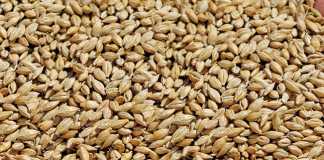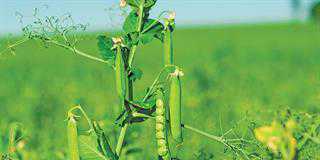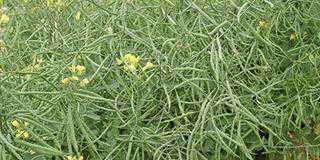
Photo: Courtesy of the Laastedrif Group
Carrots are root vegetables which originated in Asia. They belong to the same family as celery, coriander and parsley. Initially the roots were long and thin, and either purple or yellow.
These colours, as well as white and orange, still exist, with orange or orange-red being by far the most popular today. Roots come in many shapes and sizes, from long and thin to short and thick.
The edible part of the carrot is the tap root. Carrots are considered one of the major vegetables consumed in South Africa, and are among the top 10 vegetable crops in the world in terms of production area and market value.
Rich in vitamins C, B1 and B2 and particularly rich in carotene (pro-vitamin A), they can be used in many ways: raw in salads, cooked and eaten on their own, or added to soups, stews and other dishes.
Large quantities are processed, either seperately or with other vegetables, in canning, freezing or dehydration.
In South Africa, there is carrot production in the Western Cape, Gauteng, Free State, North West, KwaZulu-Natal and Mpumalanga.
What follows is a brief description of some of the basics on growing carrots. It’s not meant to take the place of expert advice from an experienced farmer or extension officer.
Cultivars
There’s a small niche market for round carrots, such as those produced by the Paris Market type, and a slightly bigger demand for conical baby carrots.
However, the main requirement on the fresh produce markets is for larger roots. The following varieties, usually with a cylindrical to longish, tapered root, are the most common: Cape Market, Chantenay Karoo, Chantenay Royal, Flacora, Ithaca, Kuroda, Senior, Star 3006 and Sugar Snax.
When to grow
Temperature and soil moisture influence the shape, colour and quality of carrots. The best quality carrots are obtained when weather conditions favour regular, uninterrupted growth.
Plant growth is optimal between temperatures of 15°C to 20°C. At temperatures below or above this range, poorer colour develops. The roots also tend to be shorter with less flavour when high temperatures prevail.
Insufficient soil moisture results in a longer, thinner root, while very wet conditions have the opposite effect and give rise to a lighter colour.
In hot, frost-free areas, avoid planting in the very hot months (October to January). Forked and cracked roots are more common in summer and the central core tends to be thicker. In cooler areas, the best time to plant carrots is from February to April and from August to October. In mild areas they can be planted throughout the year.
Where to grow
The aim is to grow straight, smooth roots. The best soil for carrots is deep sandy loam or loamy soils with a loose structure. Sand is easier to clean off at harvest.
Heavy, stony, compacted or poorly-drained soils cause deformed roots. Avoid very light soils which can be blown away, as young plants are easily damaged by wind-blown sand.
Preparing the soil
- Do not work compost or manure into the soil just before planting.
- Rich soil will result in excessive leaf growth and forked, hairy, rough roots.
- Beds should be 1m wide, separated by paths 40cm to 50cm wide.
- Prepare the soil in the beds to a depth of 30cm.
- Remove all clods and stones. Beds must be raised for good drainage.
Sowing
- Sow the seeds directly in the beds.
- Make small furrows one fingernail (1cm) deep and about two or three handwidths (20cm to 30cm) apart.
- Sow the seeds about 2cm apart in the furrows.
- Water the beds well after sowing.
- In hot, dry weather, cover the rows with a thin layer of grass clippings until the seeds emerge after seven to 14 days.
- Remove the grass and spread thinly between the rows.
Carrot seeding rates
One of the major problems confronting carrot growers is achieving the correct plant population. If the population is too low, roots tend to become large and are likely to split and crack.
Where the population is too high, roots tend to become smaller and are often twisted around one another. Dense plantings can be thinned out, but this is not practical where large-scale plantings are made. Serious producers try to get their plant population right first time.
Various factors must be taken into account in determining the optimum seeding rate.
One is the size of the end product you want. For example, you may use a variety such as Red Core Chantenay to produce large, blocky roots (up to 60mm in diameter and 160mm in length) if the product is to be delivered to a factory for dicing. In this case, you’ll only have 100 to 150 plants/ m² using 3kg seed/ha.
You can plant the same variety to produce whole baby carrots (up to 27mm in diameter and less than 80mm long) by having 700 to 1 000 plants/m², using 20kg seed/ha.
Another problem is the big differences in seed sizes found among different varieties or batches of seed. With large seed you may only have 400 000 seeds/ kg, whereas small seed may have a count of over 1,5 million seeds/kg.
The difference in germination capacity and vigour of any seed lot must also be taken into account when deciding on a seeding rate. Germination may vary from 80% to 100%.
Finally, there’s likely to be a population variation in the land, influenced by the prevailing climate, soil and other conditions. This must be taken into account.
A guideline:
- Cold soil: probability of 50% germination.
- Average conditions: 60% germination.
- Good conditions: 70% germination.
- Ideal conditions: 80% germination.
In short, you can’t generalise about weight of seed/ha – rather think of plant numbers/ ha using the size of root desired at harvest, germination ability, seed count and field factors to determine the seeding rate.
For very large roots, or earlier harvest, aim for 75 to 120 plants/ m², for medium-large roots up to 250 plants, and for fine roots 500 to 1 000 plants/m².
The calculation for the amount of seed required for sowing to give the desired population is given below.
This may seem a complicated equation, but it’s fairly easy to work out.
| Calculation: Seed required (kg/ha) = 1 000 x number of plants desired/m² of planted area Number of seeds/g x lab germination % x field factor Example 1: Number of plants desired = 80/m² Seed required (kg/ha) Example 2: Number of plants desired = 125/m² Seed required (kg /ha): |
Sources: The department of agriculture’s Directorate: Agricultural Information Services in co-operation with ARC-Roodeplaat Vegetable and Ornamental Plant Institute. A Profile of the South African Carrot Market Value Chain, produced by the department of agriculture’s Directorate: Marketing.













